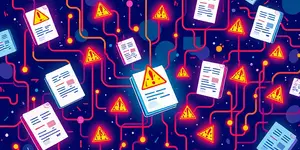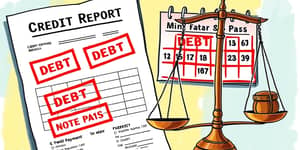
Many individuals face credit challenges that feel overwhelming at first. With determination, strategic planning, and consistent effort, you can reclaim control of your financial life and forge a brighter future.
Credit setbacks often stem from everyday pressures and unexpected emergencies. Whether you faced a job loss, unplanned medical expenses, or simply missed a few payments, the impact on your credit score can be severe.
Remember, unforeseen life events can derail financial plans, but they don’t have to define your financial destiny. Recognizing the causes and emotional weight of a credit setback is the first step toward recovery.
When stress and uncertainty mount, it’s easy to feel isolated. Yet millions of people experience similar challenges during adulthood, making your journey both common and conquerable.
Before creating a plan, you must know exactly where you stand. This means gathering every relevant document and laying out your entire financial picture with transparency.
Begin by listing all outstanding obligations and resources. This exercise transforms confusion into clarity and builds the foundation for meaningful progress.
Once you complete this inventory, you’ll have clear understanding of your current situation and be ready to set informed priorities.
When resources are limited, focus on survival basics first. Housing, utilities, and food must come before entertainment or discretionary purchases.
Adopting a leaner lifestyle temporarily can feel challenging, but it prevents further damage to your credit. Embrace the mindset shift that every dollar saved is a building block for your future stability.
By cutting non-essential spending—like subscription services or frequent dining out—you free up cash to cover vital obligations and maintain on-time payments.
focus on critical living expenses first so you can avoid late fees and keep your credit report from slipping further.
With essentials covered, it’s time to attack your debts strategically. Two proven methods can guide your approach:
Each technique has benefits: the avalanche method tackle high-interest obligations first to save money, while the snowball method provides quick victories that sustain momentum.
Decide which approach aligns with your personality and financial goals. If needed, seek a credit counselor who can help you negotiate lower interest rates or consolidate debts.
A modest emergency fund acts as a financial safety net, reducing your dependence on credit during future crises. Even saving $500 to $1,000 can prevent you from sliding back into debt.
Automate small transfers into a separate savings account each month. Over time, this fund will grow, offering peace of mind and genuine resilience against unexpected costs.
This reserve is more than money in the bank; it’s a financial cushion against unexpected emergencies that keeps you on track with your repayment plan.
Regular monitoring and proactive actions help you regain credibility with lenders. Order free credit reports from trusted sources and scrutinize every line for inaccuracies.
If you spot errors—such as misreported late payments or phantom accounts—file disputes immediately. Correcting these mistakes can yield quick score improvements.
Consider these credit-building strategies: secured credit cards that report to major bureaus, small credit-builder loans, or becoming an authorized user on a well-managed account. Always pay balances in full and on time to demonstrate responsibility.
You don’t have to rebuild alone. A range of budgeting apps can track spending in real time, helping you identify leaks and optimize your cash flow.
Professional credit counseling services offer personalized plans, lender negotiations, and ongoing accountability. Many nonprofits provide free or low-cost guidance, ensuring you receive both expertise and support.
Remember to utilize professional guidance when overwhelmed, as expert help can accelerate progress and ease stress.
Patience and consistency are crucial. Credit scores usually update monthly, so expect visible improvements over several billing cycles rather than overnight.
Set short-term targets, such as increasing your score by 20 points in three months, and celebrate small wins along the way. Logging each success reinforces positive habits.
Whenever you fall off track—whether due to an unexpected bill or emotional spending—return to your budget and repayment plan. Adjust expenses, reallocate funds, and recommit to your goals.
celebrate each credit score milestone with small rewards that reinforce your dedication without jeopardizing progress.
Knowing where you stand on the 300–850 scale offers perspective and realistic benchmarks for improvement.
Scores below 650 often lead to higher interest rates or loan denials, while scores above 750 unlock the best borrowing terms. A realistic goal might be a 50–100 point increase over six to twelve months.
As you implement these steps, remember that recovery is a journey, not a sprint. Many people face setbacks and emerge financially stronger than before.
By combining disciplined spending, a robust emergency fund, targeted debt repayment, and ongoing credit monitoring, you lay down your path to lasting financial freedom. Today’s challenges will become tomorrow’s successes, proving that with structure and perseverance, you can rebuild after any credit setback.
References













